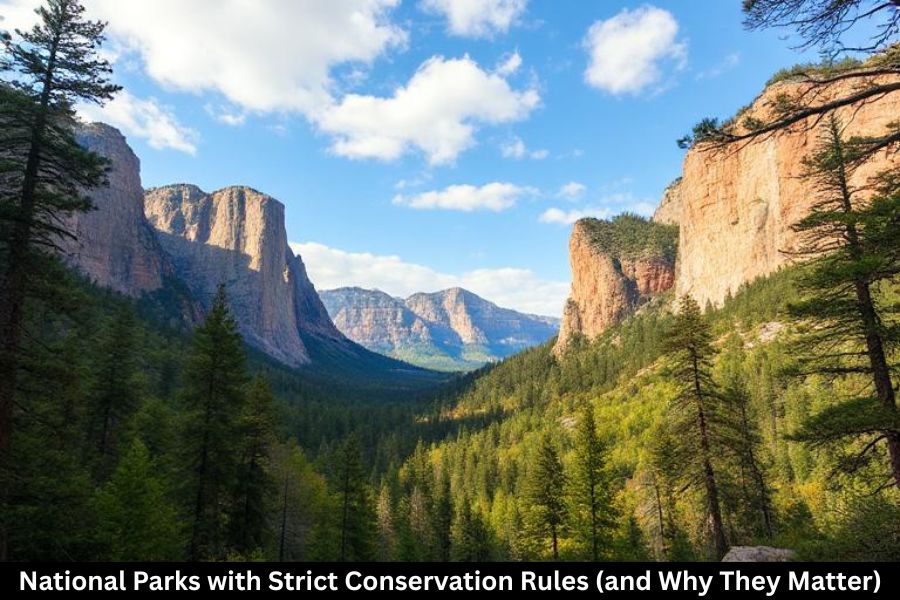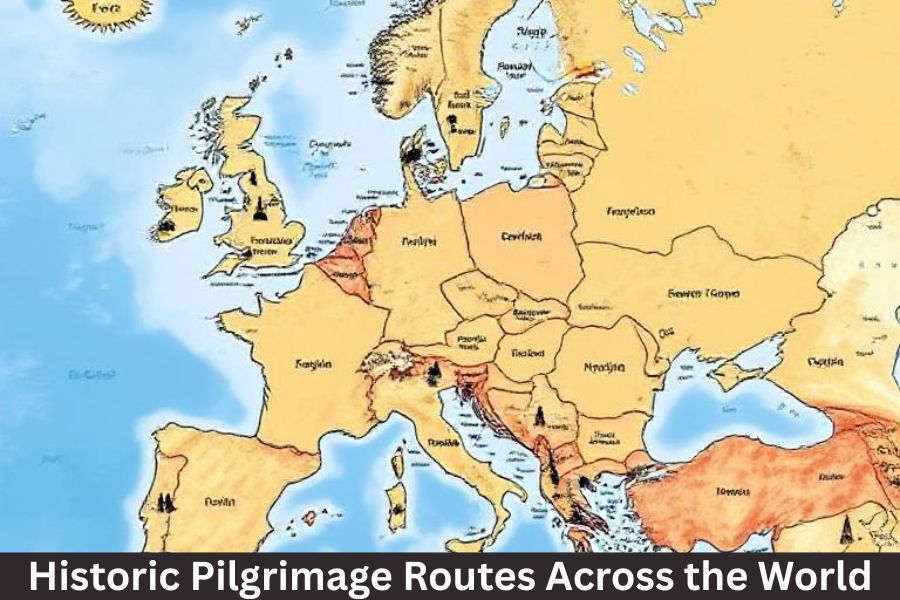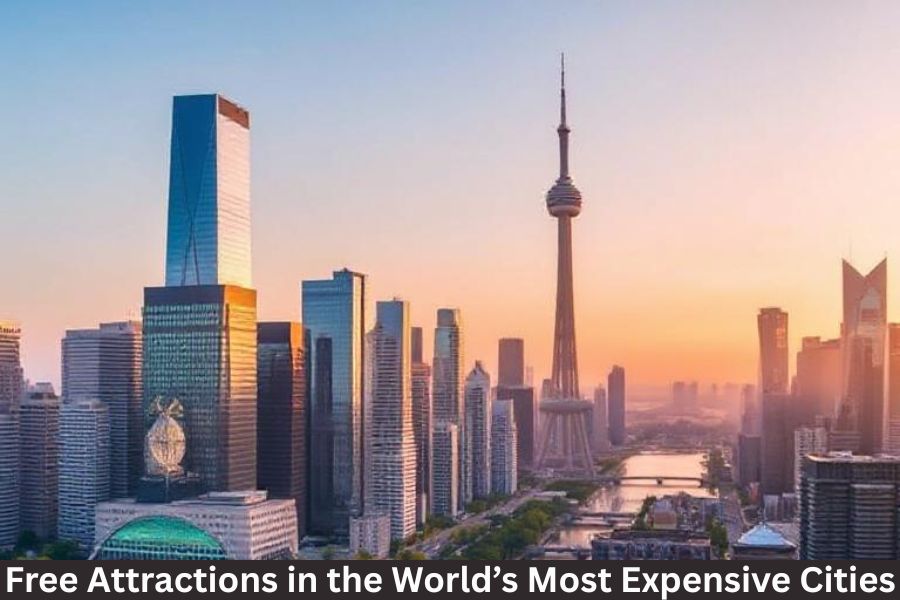We love to escape to national parks for their wild beauty, breathtaking views, and the peace only nature can provide. But behind the scenery are complex conservation efforts that keep these places intact. Some parks have strict rules—not to ruin the fun, but to protect fragile ecosystems from harm. In this article, we explore national parks with the toughest conservation rules and why these efforts are critical for our planet’s future.
The Role of National Parks in Environmental Preservation
National parks aren’t just vacation spots—they’re sanctuaries. They protect rare species, preserve ecosystems, and allow future generations to experience the wild.
Why Some Parks Need Tighter Regulations
Certain parks are home to species or habitats so sensitive, even a small disruption could be devastating. Tighter rules mean better protection and less irreversible damage.
What Are Conservation Rules and Why Are They Important?
Balancing Tourism and Biodiversity
Too many tourists can disrupt wildlife, trample plants, and pollute water. Conservation rules strike a balance—allowing humans in while keeping nature safe.
Examples of Common Conservation Measures
- Daily visitor caps
- Permits for entry or specific activities
- Prohibited areas or trails
- Strict waste disposal and no-plastic rules
- Seasonal closures for habitat protection
Galápagos National Park, Ecuador
Visitor Limits and Permits
Home to giant tortoises and marine iguanas, the Galápagos has some of the most restricted visitor policies on Earth. Only guided tours are allowed, and permits must be arranged in advance.
Protecting Endemic Wildlife
The Galápagos Islands host species found nowhere else. Even small changes to their environment can lead to extinction. Conservation efforts here are about isolation and strict control.
Yellowstone National Park, USA
Wildlife Management and Fire Ecology
America’s first national park has rigorous wildlife monitoring, including for wolves, bears, and bison. Fire is also managed carefully—not just prevented, but used as a tool for ecological balance.
Leave No Trace Principles
From not feeding wildlife to packing out waste, Yellowstone takes education seriously. Tourists are part of the protection plan.
Sagarmatha National Park, Nepal
Mount Everest Conservation Policies
As tourism to Everest booms, Sagarmatha has implemented strict rules to manage crowds, control waste, and preserve sacred Himalayan landscapes.
Managing Waste at High Altitudes
Every year, tons of trash are removed from Everest’s base camps. New rules include mandatory waste deposits and penalties for littering.
Banff National Park, Canada
Controlled Access and Wildlife Crossings
Banff leads in innovation with wildlife bridges and tunnels allowing safe crossings for animals. Certain areas are closed during nesting or mating seasons.
Sustainable Trail Use
Trail erosion and human-wildlife conflict are minimized through trail zoning and regulated access.
Komodo National Park, Indonesia
Komodo Dragon Protection
Tourist numbers are limited to reduce stress on the world’s largest lizard. Touching or feeding wildlife is strictly prohibited.
Marine Conservation Zones
The surrounding marine park is just as protected. Diving and snorkeling require certified guides to prevent coral damage.
Bwindi Impenetrable National Park, Uganda
Gorilla Trekking Permits and Ethical Tourism
Only a small number of gorilla trekking permits are issued daily. Visitors are briefed on how to behave near these critically endangered primates.
Community Involvement in Conservation
Locals are employed as guides and rangers, creating economic incentives for protecting wildlife instead of hunting it.
Torres del Paine National Park, Chile
Fire Prevention Regulations
After a devastating tourist-started fire, the park implemented strict rules: no open flames, controlled campsite use, and ranger enforcement.
Controlled Camping and Trail Use
Camp only in designated areas, and book campsites months in advance to avoid overcrowding and preserve nature.
Kakadu National Park, Australia
Aboriginal Land Rights and Cultural Protection
Kakadu is co-managed with Indigenous owners. Sacred sites are off-limits, and cultural protocols must be followed.
Biodiversity Management and Seasonal Closures
Some trails close during wet seasons to allow ecosystem recovery and minimize erosion.
Plitvice Lakes National Park, Croatia
Fragile Ecosystems and Visitor Controls
Walking on trails or stepping off-boardwalks is strictly prohibited. Even swimming is banned to protect water quality.
Water Quality Preservation
No food or drink is allowed near water bodies. This helps maintain the crystal-clear waters that make Plitvice famous.
How Tourists Can Help Protect These Parks
Follow the Rules and Be Respectful
Simple things—like staying on trails, taking only pictures, and not littering—go a long way.
Support Eco-Friendly Tours
Book with operators who practice sustainability. Your money can help fund local conservation efforts.
The Bigger Picture: Why Conservation Rules Matter Globally
Climate Change Resilience
Protected parks act as carbon sinks, climate stabilizers, and biodiversity reservoirs.
Safeguarding Biodiversity for Future Generations
Strict rules ensure future generations can see gorillas, hike glacial trails, or snorkel coral reefs just as we can—if not better.
Conclusion
National parks with strict conservation rules aren’t trying to make your vacation difficult—they’re trying to make it possible for your grandkids to enjoy the same beauty. These wild places are delicate, and human impact is real. But with smart management and mindful tourism, we can keep Earth’s most stunning corners wild and wonderful.
FAQs
1. Why do some parks limit the number of visitors?
To prevent overcrowding, protect wildlife, and avoid ecosystem damage.
2. Can I still enjoy a strict national park without guided tours?
Some require guides, others don’t—but either way, strict rules ensure a meaningful, responsible experience.
3. What happens if you break conservation rules in a national park?
Fines, removal from the park, and sometimes bans from future entry.
4. Are there apps or resources to help me follow park rules?
Yes! Many parks have official apps with maps, guidelines, and real-time alerts.
5. How can I support conservation even if I don’t visit?
Donate to park foundations, adopt an endangered animal, or share awareness on social media.



